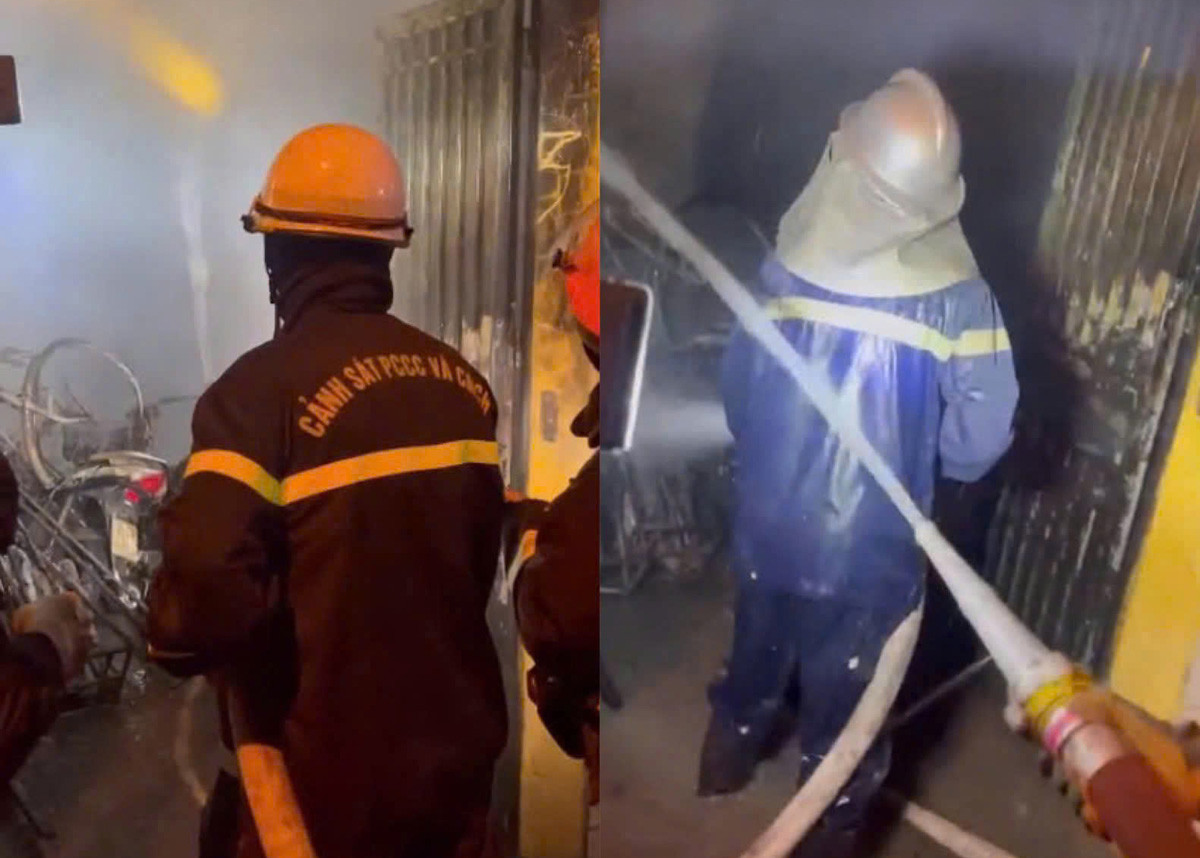
In April 2025 alone, multiple devastating fires erupted at night, resulting in significant loss of life. These incidents occurred in densely populated residential areas, often in homes lacking secondary escape routes, described as “steel cages” during emergencies. In mere moments, a fire can wipe out an entire family.
The most recent case occurred at dawn on April 28 in Hanoi’s Hoang Mai District, where a fire killed three people. Around 3:20 am, flames suddenly engulfed a three-story house with a rooftop at 87A, Alley 99/110/85, Dinh Cong Ha Street in Dinh Cong Ward in Hoang Mai District, Hanoi.
As the fire broke out at, it spread rapidly, claiming the lives of three occupants. The house was located deep in a narrow alley, with difficult access and no secondary escape route, a common issue in urban homes with makeshift extensions.
Prior to that, another fire at dawn on April 13 in Alley 14, Lane 69, Trung Liet Street (Trung Liet Ward, Don Da District, Hanoi) killed two people. The fire originated from the first floor of a three-story house and spread quickly due to flammable materials inside. As the neighborhood was asleep, the delayed detection hindered initial rescue efforts.
Soon after receiving the alert, fire prevention and control forces deployed multiple specialized vehicles to the scene, breaking doors to access victims. However, with the fire raging and no secondary escape route, rescuers could only approach from the front. Tragically, a couple around 35 years old was trapped inside and died.
The fire was attributed to an electrical short circuit from a device on the first floor, serving as another warning about the risks of unsafe electrical appliances in old residential homes, especially at night when no one is monitoring.
The issue of homes being tightly locked with no escape routes was evident in a fire in Tie Giang. At around 1.30am on April 10, a house at 209/3 Nam Ky Khoi Nghia Street, Ward 4, My Tho City, caught fire. Neighbors in the alley heard cries for help and tried to break in but the house was locked from the inside.
By the time authorities extinguished the flames, all four occupants had died. The single-story house with a mezzanine, located deep in a narrow alley with no rear escape route, posed challenges for rescue efforts during the nighttime blaze.
On April 2, a fire broke out at 11.00 pm at house number 14, Lane 40, Dang Tran Duc Street, Thanh Tri Ward (Hoang Mai District, Hanoi), claiming one life. When flames erupted on the first floor, blocking the main exit, two children and their mother used an emergency escape route through a window, safely descending with neighbors’ help via a ladder.
During the firefighting and rescue operation, authorities found one family member deceased on the first floor. The victim had heart disease, was elderly, and had limited mobility. As the fire blocked the first-floor entrance of the tube-shaped house, he could not escape via the emergency route on the second floor.
Also on April 2, at 2.00 am, a fire at a house on Mac Van Street, Xom Cui Ward, District 8, HCM City, killed three people, while five others escaped.
Most of these fires broke out at night, when residents are least vigilant and struggle to react quickly to sudden flames. Many of the affected homes had failed to meet fire safety standards: they had sealed designs, no secondary escape routes, flammable materials inside, or outdated electrical systems.
Even when fires don’t occur at night, extinguishing them remains challenging. Many residents install iron bars outside windows, known as “chuong cop” (tiger cages) to prevent theft. As a result, these cages inadvertently trap family members, robbing them of their chance to escape.
These tragic incidents have rung the alarm bell over poor firefighting devices and the unreasonable design of homes. It is necessary to urgently strengthen fire prevention and control in residential areas, particularly in homes used for both purposes of business and accommodation, and those located in narrow alleys.
Authorities recommend that households should have basic firefighting tools, ensure emergency escape routes, and install early fire detection systems to identify risks, extinguish fires, and evacuate promptly.
Y Nhuy